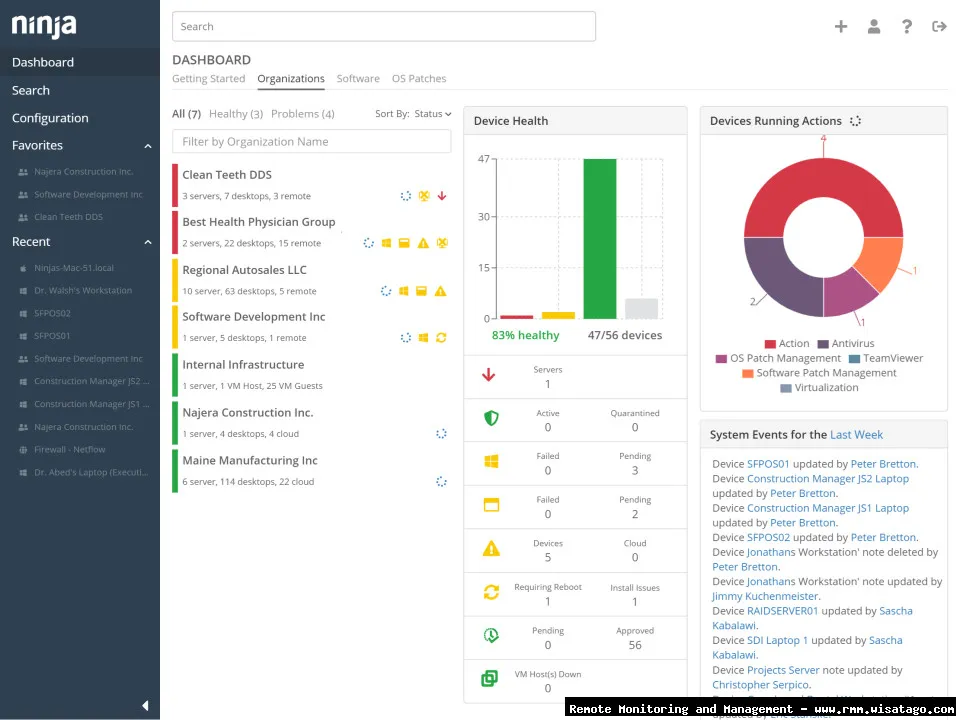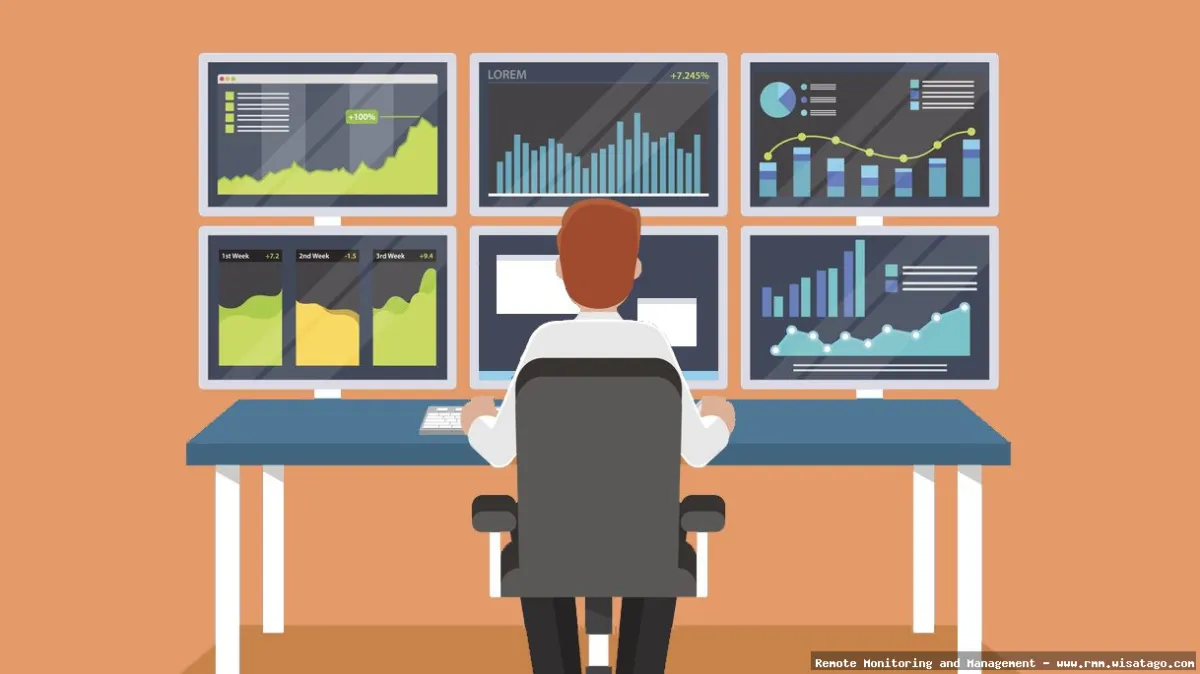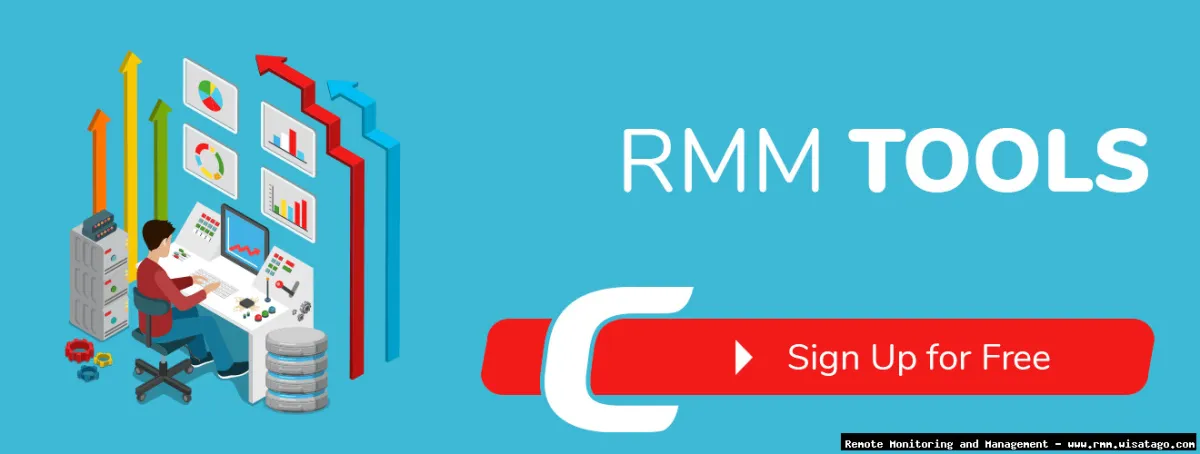In today’s complex IT landscape, managing a diverse array of devices is a constant challenge for IT professionals. We’re no longer dealing with a homogenous environment of Windows desktops. Now, it’s Windows, macOS, Linux, and even mobile devices all vying for our attention. This is where cross-platform remote control within Remote Monitoring and Management (RMM) software becomes absolutely essential. It’s not just a nice-to-have feature; it’s a critical component for efficient and effective IT management.
Think about it: you’re supporting a company with graphic designers using Macs, developers working on Linux servers, and the sales team armed with Windows laptops. Each operating system has its quirks and requires specific troubleshooting approaches. Without a cross-platform RMM solution, you’re stuck juggling multiple remote access tools, each with its own learning curve and limitations. This fragmented approach leads to wasted time, increased frustration, and ultimately, a less productive IT department.

This article aims to provide a comprehensive guide to cross-platform remote control in RMM software. We’ll delve into the features, benefits, and considerations involved in choosing the right solution for your needs. We’ll explore real-world use cases and discuss the challenges IT teams face when implementing these tools. Whether you’re just starting to explore RMM solutions or looking to upgrade your existing setup, this guide will provide you with the information you need to make informed decisions and optimize your IT management strategy.
What is Cross-Platform Remote Control in RMM?
At its core, cross-platform remote control in RMM software allows IT technicians to access and control devices running different operating systems from a single interface. This means you can remotely troubleshoot a Windows PC, configure a macOS server, or even manage a Linux workstation – all from the same RMM console. It eliminates the need for separate remote access tools for each operating system, streamlining the support process and improving overall efficiency.
Key Features of Cross-Platform Remote Control
A robust cross-platform remote control solution will typically offer a range of features designed to simplify and enhance remote support:
- Operating System Compatibility: Support for Windows, macOS, and Linux is the bare minimum. Ideally, the solution should also support mobile operating systems like iOS and Android, even if the level of control is limited.
- Unattended Access: The ability to access devices even when no user is present is crucial for after-hours maintenance and troubleshooting.
- File Transfer: Securely transferring files between the technician’s machine and the remote device is essential for installing software, retrieving logs, and performing other administrative tasks.
- Remote Command Line: Accessing the command line or terminal on the remote device allows technicians to execute commands and scripts for advanced troubleshooting and configuration.
- Session Recording: Recording remote sessions can be invaluable for training purposes, auditing, and demonstrating compliance with security regulations.
- Chat and Collaboration: Integrated chat functionality allows technicians to communicate with end-users during remote sessions, providing real-time assistance and guidance.
- Security Features: Robust security measures, such as encryption, multi-factor authentication, and access controls, are essential to protect sensitive data and prevent unauthorized access.
- Performance and Stability: The remote control connection should be stable and responsive, even over slow or unreliable network connections.
Benefits of Using Cross-Platform RMM Remote Control
Implementing cross-platform remote control in your RMM solution offers numerous benefits for IT teams and organizations:
Enhanced Efficiency and Productivity
By centralizing remote access management, technicians can quickly and easily access devices running different operating systems without switching between multiple tools. This saves time, reduces frustration, and allows them to resolve issues more efficiently. The unified interface and streamlined workflow improve overall productivity and reduce the time it takes to resolve support tickets.
Reduced IT Costs
Consolidating remote access tools into a single RMM solution can significantly reduce software licensing costs. Additionally, the increased efficiency and productivity of IT staff can lead to further cost savings. By resolving issues faster and more effectively, technicians can minimize downtime and prevent costly disruptions to business operations.
Improved User Experience
Cross-platform remote control allows IT teams to provide faster and more effective support to end-users, regardless of the operating system they are using. This leads to improved user satisfaction and a more positive perception of the IT department. The ability to resolve issues remotely also minimizes disruptions to users’ workflows and allows them to stay productive.
Simplified IT Management
Managing a diverse IT environment can be complex and challenging. Cross-platform remote control simplifies IT management by providing a single pane of glass for accessing and controlling all devices. This makes it easier to monitor device health, deploy software updates, and perform other administrative tasks. The centralized management capabilities of RMM software also improve security and compliance.

Real-World Use Cases for Cross-Platform RMM Remote Control
The applications of cross-platform remote control are vast and varied. Here are a few real-world examples:
Troubleshooting Windows PCs from a Mac
Imagine a scenario where a graphic designer using a Mac is experiencing issues with a Windows-based application. With cross-platform remote control, an IT technician can remotely access the Windows PC from their Mac workstation and troubleshoot the problem without having to physically visit the user’s desk.
Managing Linux Servers from a Windows Workstation
Many organizations rely on Linux servers for critical infrastructure components. With cross-platform remote control, IT administrators can remotely manage these servers from their Windows workstations, performing tasks such as configuring network settings, installing software updates, and monitoring system performance.
Supporting Mobile Devices from a Central Console
As mobile devices become increasingly integrated into the workplace, the need to support them remotely is growing. Cross-platform RMM solutions can provide limited remote control capabilities for iOS and Android devices, allowing technicians to troubleshoot common issues, configure settings, and remotely wipe devices in case of loss or theft.
Performing After-Hours Maintenance on Remote Servers
Unattended access allows IT technicians to perform maintenance tasks on remote servers outside of business hours, minimizing disruptions to users. This includes tasks such as applying security patches, updating software, and performing system backups.
Challenges and Considerations
While cross-platform remote control offers numerous benefits, there are also some challenges and considerations to keep in mind when implementing a solution:
Performance Differences Across Operating Systems
The performance of remote control sessions can vary depending on the operating system and the hardware of the remote device. Older or less powerful devices may experience slower performance, which can impact the user experience. It’s important to test the solution on a variety of devices to ensure acceptable performance. To ensure sustained business growth, exploring Profitable Rmm Solutions becomes a critical step
Security Concerns
Remote access can introduce security risks if not properly secured. It’s crucial to choose an RMM solution that offers robust security features, such as encryption, multi-factor authentication, and access controls. Regularly review and update security policies to mitigate potential risks.

Compatibility Issues
Not all RMM solutions offer the same level of compatibility across different operating systems. Some solutions may have limited functionality or require specific configurations for certain operating systems. It’s important to carefully evaluate the compatibility of the solution with your specific IT environment.
Bandwidth Requirements
Remote control sessions can consume significant bandwidth, especially when transferring files or streaming video. Ensure that your network infrastructure can support the bandwidth requirements of the RMM solution, particularly for remote locations with limited bandwidth.
Choosing the Right Cross-Platform RMM Solution
Selecting the right cross-platform RMM solution requires careful consideration of your organization’s specific needs and requirements. Here are some key factors to consider:
Operating System Support
Ensure that the RMM solution supports all the operating systems used in your environment, including Windows, macOS, Linux, and mobile devices. Verify the level of support provided for each operating system and any limitations that may exist.
Security Features
Prioritize security when choosing an RMM solution. Look for features such as encryption, multi-factor authentication, access controls, and session recording. Ensure that the solution complies with relevant security regulations and industry best practices. Effective IT management often involves proactive monitoring, and RMM plays a crucial role in that process
.
Ease of Use
The RMM solution should be easy to use and intuitive for IT technicians. A user-friendly interface and streamlined workflow can significantly improve efficiency and reduce training time.
Integration with Other Tools
Consider how well the RMM solution integrates with other IT management tools, such as ticketing systems, asset management software, and security solutions. Seamless integration can improve workflow automation and data sharing.
Pricing and Licensing
Evaluate the pricing and licensing model of the RMM solution. Consider the total cost of ownership, including software licenses, hardware requirements, and ongoing maintenance. Choose a solution that fits your budget and provides the best value for your needs.

Conclusion
Cross-platform remote control is a critical component of modern RMM software, enabling IT teams to efficiently manage and support diverse IT environments. By streamlining remote access, reducing costs, and improving user experience, cross-platform RMM solutions can significantly enhance IT operations. However, it’s crucial to carefully evaluate your organization’s specific needs and choose a solution that offers the right features, security, and compatibility. With the right RMM solution in place, you can empower your IT team to provide exceptional support and keep your organization running smoothly.
Conclusion
In conclusion, cross-platform remote control within RMM software has become an indispensable tool for modern IT professionals. We’ve explored how this capability transcends the limitations of operating systems, allowing technicians to seamlessly support a diverse range of devices from a single console. The benefits are clear: increased efficiency, reduced support costs, and enhanced end-user satisfaction. By eliminating compatibility barriers, cross-platform remote control empowers IT teams to proactively address issues, regardless of the device or location.
The ability to remotely access and manage systems running Windows, macOS, and Linux is no longer a luxury, but a necessity for businesses operating in today’s heterogeneous environments. As device diversity continues to grow, the value of this feature will only increase. If your current RMM solution lacks robust cross-platform remote control capabilities, it’s time to explore alternatives. Consider evaluating different RMM platforms and prioritize those that offer comprehensive cross-platform support to ensure your IT team is equipped to handle the challenges of modern device management. Take the next step and research leading RMM solutions with cross-platform capabilities today!
Frequently Asked Questions (FAQ) about Cross-Platform Remote Control in RMM Software
What are the key benefits of using cross-platform remote control within my RMM software, and how does it improve efficiency for managed service providers?
Cross-platform remote control in RMM software offers significant benefits for managed service providers (MSPs). Firstly, it enables technicians to remotely access and manage devices running different operating systems (Windows, macOS, Linux, Android, iOS) from a single console. This eliminates the need for multiple tools and streamlines workflows, saving time and improving efficiency. Secondly, it allows MSPs to support a wider range of client devices, catering to diverse environments. Thirdly, cross-platform capabilities enhance troubleshooting by providing immediate access to systems regardless of their OS, enabling faster resolution times. Moreover, it improves security by ensuring consistent patching and security updates across all platforms. This centralized management approach significantly reduces operational overhead and improves overall service delivery.
What security features should I look for in RMM software that offers cross-platform remote control to protect my clients’ data and systems during remote sessions?
When selecting RMM software with cross-platform remote control, robust security features are paramount. Ensure the software utilizes end-to-end encryption (e.g., AES 256-bit) to protect data transmitted during remote sessions. Two-factor authentication (2FA) should be mandatory for all technicians accessing the platform to prevent unauthorized access. Look for features like role-based access control (RBAC) to limit technician privileges based on their responsibilities. Session recording and auditing capabilities are vital for monitoring and investigating potential security incidents. Remote access should require explicit user consent on the client-side. Finally, the RMM software vendor should have a strong track record of security and compliance, including regular security audits and penetration testing, adhering to industry standards like SOC 2.
How does cross-platform remote control in RMM software facilitate faster patch management and software updates across different operating systems like Windows, macOS, and Linux?
Cross-platform remote control in RMM software streamlines patch management across diverse operating systems by providing a centralized platform to manage and deploy updates. Technicians can remotely scan for missing patches and vulnerabilities on Windows, macOS, and Linux systems from a single console. The software typically offers automated patch deployment capabilities, allowing MSPs to schedule updates during off-peak hours to minimize disruptions. Furthermore, cross-platform support ensures that all devices, regardless of their OS, receive timely security updates, reducing the risk of cyber threats. The ability to remotely reboot systems after updates, monitor installation progress, and generate reports on patch compliance further enhances efficiency and control. This centralized approach significantly reduces the manual effort involved in managing patch management across a heterogeneous environment.